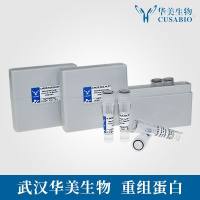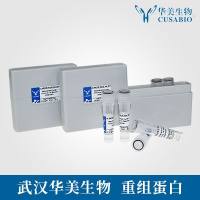Modeling Membrane Proteins Utilizing Information from Silent Amino Acid Substitutions
互联网
- Abstract
- Table of Contents
- Materials
- Figures
- Literature Cited
Abstract
This unit describes predicting the structure of simple transmembrane ??helical bundles. The protocol is based on a global molecular dynamics search (GMDS) of the configuration space of the helical bundle, yielding several candidates structures. The correct structure amongst these candidates is selected using information from silent amino acid substitutions, employing the following premise: Only the correct structure must (by definition) accept all of the silent amino acid substitutions. Thus, the correct structure is found by repeating the GMDS for several close homologues and selecting the structure that persists in all of the trials.
Table of Contents
- Basic Protocol 1: Selecting a Correct Protein Structure Using CHI
- Guidelines for Understanding Results
- Commentary
- Literature Cited
- Figures
Materials
Basic Protocol 1: Selecting a Correct Protein Structure Using CHI
Necessary Resources
|
Figures
-
Figure 5.3.1 In a bundle with n transmembrane α‐helices (helices i and j in this case), 3 n parameters can be used to describe the general structure, assuming rigid helices: (1) the inclination of the helices with respect to the bundle axis, βi , related to the commonly used crossing angle Ω (2) the rotational angle about the helix director, φi , which defines which side of helix i is facing towards the bundle core; and (3) the helix register, ri , which defines the relative vertical position of the helix. View Image -
Figure 5.3.2 CHI main page. View Image -
Figure 5.3.3 CHI “Create setup” first screen. View Image -
Figure 5.3.4 CHI “Create setup” Edit Sequence screen. View Image -
Figure 5.3.5 CHI “Edit setup” first screen for editing an existing parameters file. View Image -
Figure 5.3.6 CHI “Edit file” screen with structure parameters. View Image -
Figure 5.3.7 Creating a glycine parameter file. View Image
Videos
Literature Cited
| Adams, P.D., Arkin, I.T., Engelman, D.M., and Brünger, A.T. 1995. Computational searching and mutagenesis suggest a structure for the pentameric transmembrane domain of phospholamban. Nat. Struct. Biol. 2:154‐162. | |
| Arkin, I.T. 2002. Structural aspects of oligomerization taking place between the transmembrane alpha‐helices of bitopic membrane proteins. Biochim. Biophys. Acta 1565:347‐363. | |
| Arkin, I.T., Adams, P.D., MacKenzie, K.R., Lemmon, M.A., Brünger, A.T., and Engelman, D.M. 1994. Structural organization of the pentameric transmembrane alpha‐helices of phospholamban, a cardiac ion channel. EMBO J. 13:4757‐4764. | |
| Brünger, A.T., Adams, P.D., Clore, G.M., DeLano, W.L., Gros, P., Grosse‐Kunstleve, R.W., Jiang, J.S., Kuszewski, J., Nilges, M., Pannu, N.S., Read, R.J., Rice, L.M., Simonson, T., and Warren, G.L. 1998. Crystallography & NMR system: A new software suite for macromolecular structure determination. Acta Crystallogr. D Biol. Crystallogr. 54:905‐921. | |
| Kukol, A., Adams, P.D., Rice, L.M., Brünger, A.T., and Arkin, T.I. 1999. Experimentally based orientational refinement of membrane protein models: A structure for the Influenza A M2 H+ channel. J. Mol. Biol. 286:951‐962. | |
| Kukol, A., Torres, J., and Arkin, I.T. 2002. A structure for the trimeric MHC class II‐associated invariant chain transmembrane domain. J. Mol. Biol. 320:1109‐1117. | |
| Lemmon, M.A., Flanagan, J.M., Hunt, J.F., Adair, B.D., Bormann, B.J., Dempsey, C.E., and Engelman, D.M. 1992a. Glycophorin A dimerization is driven by specific interactions between transmembrane alpha‐helices. J. Biol. Chem. 267:7683‐7689. | |
| Lemmon, M.A., Flanagan, J.M., Treutlein, H.R., Zhang, J., and Engelman, D.M. 1992b. Sequence specificity in the dimerization of transmembrane alpha‐helices. Biochemistry 31:12719‐12725. | |
| Lemmon, M.A., Treutlein, H.R., Adams, P.D., Brünger, A.T., and Engelman, D.M. 1994. A dimerization motif for transmembrane alpha‐helices. Nat. Struct. Biol. 1:157‐163. | |
| MacKenzie, K.R., Prestegard, J.H., and Engelman, D.M. 1997. A transmembrane helix dimer: Structure and implications. Science 276:131‐133. | |
| Rice, L.M. and Brünger, A.T. 1994. Torsion angle dynamics: Reduced variable conformational sampling enhances crystallographic structure refinement. Proteins 19:277‐290. | |
| Stevens, T.J. and Arkin, I.T. 2000. Do more complex organisms have a greater proportion of membrane proteins in their genomes? Proteins 39:417‐420. | |
| Torres, J., Adams, P.D., and Arkin, I.T. 2000. Use of a new label, 13C=18O, in the determination of a structural model of phospholamban in a lipid bilayer: Spatial restraints resolve the ambiguity arising from interpretations of mutagenesis data. J. Mol. Biol. 300:677‐685. | |
| Torres, J., Kukol, A., and Arkin, I.T. 2001. Mapping the energy surface of transmembrane helix‐helix interactions. Biophys. J. 81:2681‐2692. | |
| Torres, J., Briggs, J.A., and Arkin, I.T. 2002a. Contribution of energy values to the analysis of global searching molecular dynamics simulations of transmembrane helical bundles. Biophys. J. 82:3063‐3071. | |
| Torres, J., Briggs, J.A., and Arkin, I.T. 2002b. Convergence of experimental, computational and evolutionary approaches predicts the presence of a tetrameric form for CD3‐zeta. J. Mol. Biol. 316:375‐384. | |
| Torres, J., Briggs, J.A., and Arkin, I.T. 2002c. Multiple site‐specific infrared dichroism of CD3‐zeta, a transmembrane helix bundle. J. Mol. Biol. 316:365‐374. | |
| Treutlein, H.R., Lemmon, M.A., Engelman, D.M., and Brü Nger, A.T. 1992. The glycophorin A transmembrane domain dimer: Sequence‐specific propensity for a right‐handed supercoil of helices. Biochemistry 31:12726‐12732. | |
| Key References | |
| Arkin et al., 1994. See above. | |
| In this article, global searching molecular dynamics simulation is used to find a model for phospholamban. | |
| Adams et al., 1995. See above. | |
| Here, the theory of global searching molecular dynamics simulation is presented in detail. | |
| Briggs, J.A.G., Torres, J., Kukol, A., and Arkin, I.T. 2001. A new method to model membrane protein structure based on silent amino‐acid substitutions. Proteins Struct. Funct. Genet. 44:370‐375. | |
| In this article, silent substitution modeling is introduced for the first time. | |
| Torres et al., 2002a. See above. | |
| In this paper, results of global searching molecular dynamics simulations are analyzed in terms of energy, thereby enabling the user to further select among candidate models. | |
| Torres et al., 2002b. See above. | |
| In this work, silent substitution modeling is employed to derive a structure of the TCR CD3ζ transmembrane helical bundle, shown to coincide with that obtained experimentally. |



![DKFZ-PSMA-11,4,6,12,19-Tetraazadocosane-1,3,7-tricarboxylic acid, 22-[3-[[[2-[[[5-(2-carboxyethyl)-2-hydroxyphenyl]methyl](carboxymethyl)amin](https://img1.dxycdn.com/p/s14/2025/1009/171/0405943971658126791.jpg!wh200)





